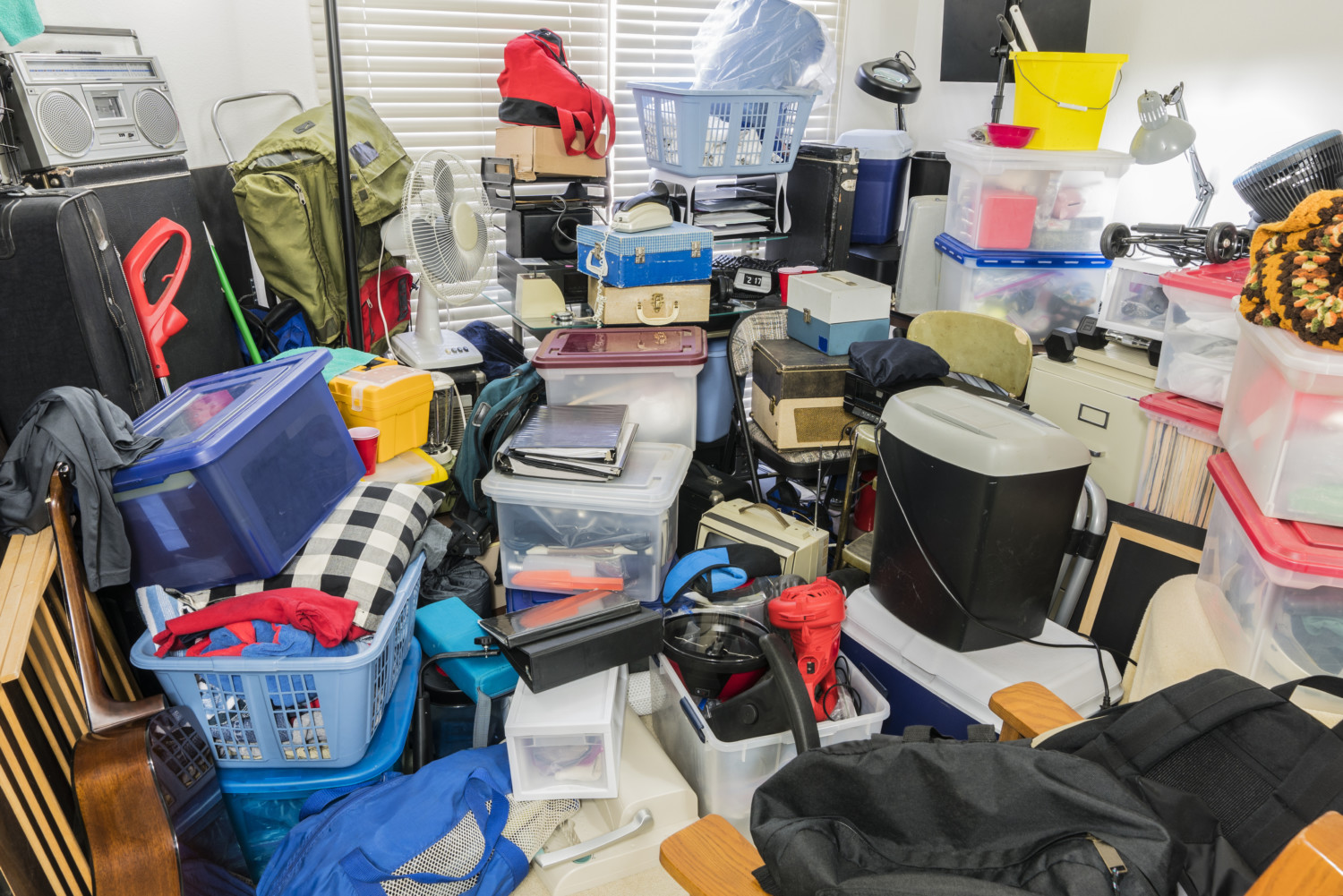The products and services mentioned below were selected independent of sales and advertising. However, Simplemost may receive a small commission from the purchase of any products or services through an affiliate link to the retailer's website.
Explanations of what Swedish death cleaning is often start with what it isn’t: It isn’t morbid, it isn’t fatalistic, it isn’t depressing. Rather, döstädning — dö meaning “death” and städning meaning “cleaning” — is a pragmatic and thoughtful decluttering process that embraces minimalism. And yes, it does frankly consider what your loved ones might be stuck clearing out of your home when you die.
It’s a philosophy that was popularized beyond Scandinavia by Margareta Magnusson’s 2018 book, “The Gentle Art of Swedish Death Cleaning: How to Free Yourself and Your Family from a Lifetime of Clutter.” Magnusson says in the book that she’s “somewhere between eighty and one hundred years old,” but you can and should start döstädning at any time in your life.
“It is a word that is used when you or someone else does a good, thorough cleaning and gets rid of things to make life easier and less crowded,” Magnusson writes.
“Sometimes you just realize that you can hardly close your drawers or barely shut your closet door. When that happens, it is definitely time to do something, even if you are only in your thirties.”

I have to admit, I needed this book at the start of 2021. Cleaning out my closet over the holidays did little to alleviate a nagging feeling I’ve had as I spent more time at home during the pandemic: I have too much stuff. Too many clothes, too many kitchen gadgets, too many books … OK, maybe not too many books. But the pandemic has brought what’s important in life into focus, and ten months into this, I can confirm that having more stuff is not what’s important to me.
Still, as I cleaned my closet, I was dismayed to find myself hanging onto a lot of my clothes. I couldn’t let go! My husband teased me with a jab. “Is it sparking joy?” he asked, knowing that Marie Kondo’s KonMari method sparks no joy for me. (By design, consumerism gives us a hit of joy, so of course, I have too much stuff that sparks joy!)
The idea of clearing things out of my home based on what someone else could get stuck cleaning up is a way to flip KonMari on its head: Does this item spark joy, or does it spark a feeling that I’d be embarrassed for someone to find out just how many sweaters I have stashed in my cedar chest, or disappointment that I’m still hanging onto worn-out sneakers I haven’t run in for at least a year? What would I think if I had to clear these things out of someone else’s home? Well, I’d think it was ridiculous, that’s what.

Magnusson does have a section on embarrassing items, but shame and peer pressure aren’t her main concerns — after all, this is a “gentle art.” The important thing, she writes, is that that Swedish death cleaning makes your home easier to keep clean and organized.
“Life will become more pleasant and comfortable if we get rid of some of the abundance,” Magnusson writes.
OK, maybe she does employ a bit of shaming, but it’s part of the humor she brings to the book. “I know families who live in a complete mess (I won’t mention the names of my children here, but you know who you are),” she writes. “Mess is an unnecessary source of irritation.”

How Do You Do Swedish Death Cleaning?
Don’t start with photographs and letters, Magnusson writes. Sentimental items will hold you up, and before you know it, you’re lost on memory lane instead of cleaning.
She suggests starting with large items first, and big categories, like clothing. Make a pile of things to keep and things to give away — and she’s big on giving things away, especially when it comes to more sentimental items.
When her mother-in-law died, there was less for her to clean from her apartment because she’d been death cleaning for years.
“In the last years of her life, every time we visited her or when she came to us, she would give us beautiful china plates, a pretty tablecloth, or nicely colored napkins to take home, pressing them into our hands as we left. … over time she had slowly and unobtrusively given a lot away in a quiet, kind way. At the same time she had added beautiful and useful things to her friends’ and loved ones’ homes.”
But Magnusson also covers how to tactfully talk with family members about giving things away and asking others whether they want something. Be kind but honest, she says.
“If you are too scared to be a little ‘impolite’ with your parents and you do not dare to raise the topic or ask them questions to help them think about how they want to handle their things, don’t be surprised if you get stuck with it all later on!”
Since Swedish death cleaning is a slow method (Magnusson says it takes many hours) and really more of a lifestyle than a method, anyway, I’ll be gradually going through my things in 2021 and keeping in mind a bit of her between-80-and-100 wisdom:
“You really can’t take everything with you, so maybe it is better to not try to own it all.”
This story originally appeared on Simplemost. Checkout Simplemost for additional stories.


